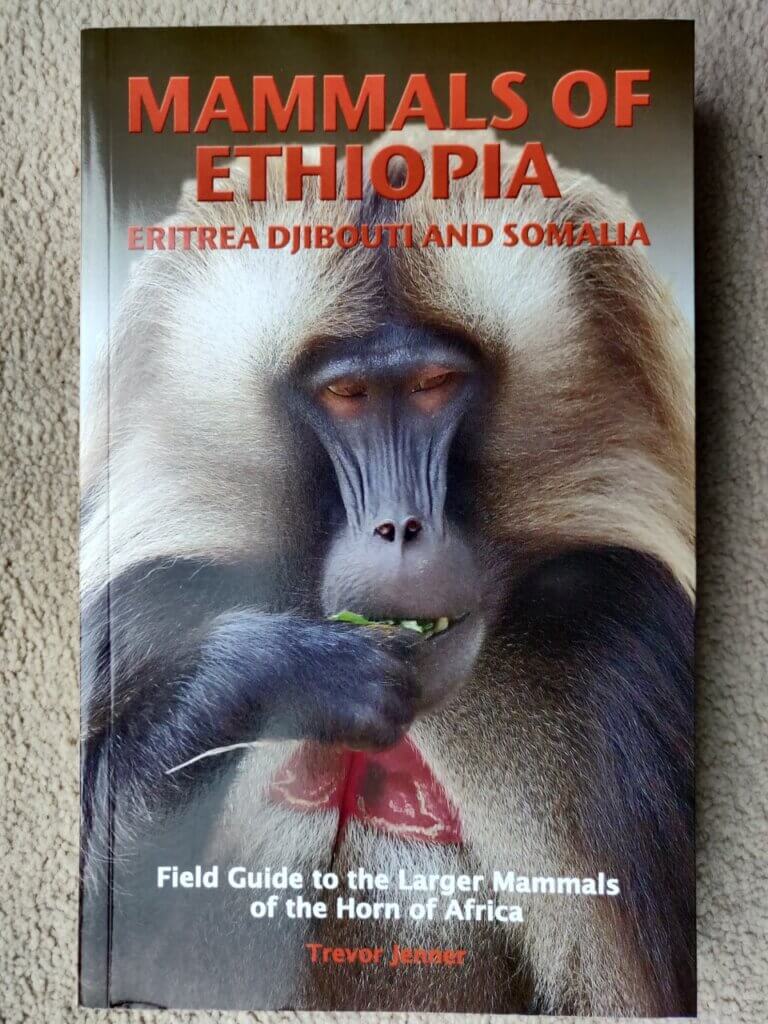
Reviewed by Tim Melling
Ethiopia has a remarkably rich mammal fauna including a number of iconic endemics like Ethiopian Wolf, Mountain Nyala, Bale Monkey and Gelada. This new guide is exactly what visitors to this region need to find and identify the mammals of this region. It is attractively laid out and brimming with useful information, yet small enough to carry with you. Each species has remarkably good photographs of even the most elusive species, accompanied by detailed distribution maps, plus notes on every subspecies present. In addition, there are pithy notes on identification and separation from confusion species, plus interesting notes on behaviour, ecology and status. For example, it notes that the Ethiopian Wolf is the rarest canid on the planet with a global population of just 500.
Although the main title is Mammals of Ethiopia it also deals with adjacent countries in the Horn of Africa (Eritrea, Djibouti and Somalia). It only claims to deal with the “larger” mammals but really it deals with all the mammals you are likely to be able to identify in the field, so scores of bats, rats, mice and shrews are only mentioned in a country checklist at the back. But a few rodents are included, such as Squirrels, and the endemic Giant Mole Rats on which the Ethiopian Wolves feed and which visitors are likely to see.
The species accounts make up the bulk of the book but there are also some excellent chapters on each of the component countries dealing with climate, habitat and vegetation. There are more detailed sections on each of the main mammal-watching areas plus a thumbnail guide to every National Park, Reserve and Sanctuary with the main mammals to be found there.
I first visited Ethiopia in 2012 and asked a friend before I went which was the best mammal book. He swiftly replied Jonathan Kingdon’s pocket guide to African Mammals which I duly bought and have used on subsequent trips. But how I wish I’d had this guide instead. The Kingdon guide covered the whole of sub-Saharan Africa and did not deal well with the specialist high altitude mammals of Ethiopia. For example, the gingery coloured Bushbucks in the Kingdon guide bore little resemblance to the black Bushbucks that I saw in Ethiopia. Also, the taxonomy has moved on a great deal since this was published and with such broad distribution maps it was difficult to be sure which species or subspecies I had seen in Ethiopia. In fact, this new guide has helped me to sort out some Dikdik subspecies, which I had photographed but never properly identified. It really fills a gap in the market and is the perfect accompaniment to the Helm Guide to the Birds of the Horn of Africa (Redman et al.).
I will definitely be recommending it to any of my friends planning to visit this region.
Mammals of Ethiopia, Eritrea, Djibouti and Somalia – Field Guide to the Larger Mammals of the Horn of Africa by Trevor Jenner is published by Meru Publishing.
[registration_form]